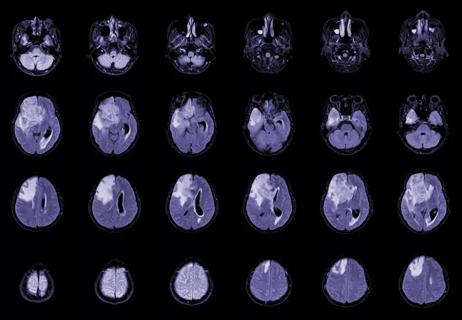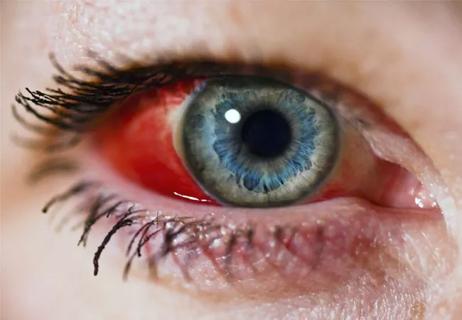Radiation, endocrine therapy show fewer long-term effects

Cleveland Clinic is among the institutions that initially led the charge in cancer survivorship care, routinely offering survivorship-care visits to breast cancer patients beginning in 2009. Drawing on this experience, investigators recently found that symptoms and concerns reported during a patient’s survivorship are strongly linked to three variables, in particular: chemotherapy, body mass index and exercise.
Cleveland Clinic is a non-profit academic medical center. Advertising on our site helps support our mission. We do not endorse non-Cleveland Clinic products or services. Policy
The most commonly reported symptoms and concerns overall included hot flashes/night sweats, neuropathy, sleep difficulty, fatigue, excess body weight, sexual concerns, anxiety and pain. The prevalence among survivors was roughly 24-44 percent for these issues.
Chemotherapy was most consistently associated with symptoms in the long term, according to the Cleveland Clinic study, which included a large sample of patients treated for stage 0-III breast cancers. While researchers expected that chemotherapy would be linked to symptoms among survivors, the long-term presence and the significant number of symptoms in comparison to radiation and endocrine therapy was unexpected.
“The extent to which chemotherapy affected these patients in the long term was surprising and quite dramatic,” says medical oncologist Halle Moore, MD, of the Department of Solid Tumor Oncology at Cleveland Clinic Cancer Center. Dr. Moore was senior investigator of the study.
Accepted for presentation at the 2016 American Society of Clinical Oncology (ASCO) Annual Meeting in Chicago, the study draws on more than six years of data on symptom prevalence and patient risk factors collected by Dr. Moore and colleagues.
Investigators examined data from survivorship visits offered to breast cancer patients at Cleveland Clinic from April 2009 to November 2015. Of the 1,171 patients seen for an initial survivorship visit, 1,126 met eligibility requirements and completed the questionnaire. All patients had undergone surgery, while 64 percent had chemotherapy, 66 percent had radiotherapy and 78 percent had endocrine therapy.
The study identified factors that could potentially influence patient-reported concerns such as time since treatment, age, comorbidities, BMI and exercise habits. Median time from treatment completion to the survivorship visit was 18 months (range 0-300 months). Survivors identified a total of 34 symptoms and comorbidities, 31 of which were assessed with multivariable logistic regression analysis.
In the multivariable analysis, chemotherapy was associated with a higher likelihood of 26 of the 31 symptoms and comorbidities, rendering it the strongest factor in predicting long-term symptoms such as hot flashes, paresthesia, insomnia and fatigue.
In the multivariable model, exercise and BMI also were associated significantly with symptoms, but in the opposite direction. “I don’t think it’s a big surprise here that people who exercise regularly might be feeling better and reporting fewer symptoms, but it does just reinforce that healthy behaviors such as exercise are important,” Dr. Moore says. “It shows that exercise is a good thing overall, and although we were unable to determine whether starting to exercise after cancer treatment was as beneficial as exercising even before the cancer diagnosis, exercise probably needs to begin earlier rather than later.”
An estimated 51 percent of people in the United States do not get recommended levels of physical activity, and patients in this study were not far from that estimate: 52 percent reported exercising for at least 30 minutes most days, and those who did so experienced a decrease in the prevalence of a number of symptoms, including paresthesia, fatigue, concerns about excess weight and pain.
In total, 66 percent of participants were overweight or obese, and elevated BMI was associated with concerns about weight, pain, abnormal hair loss/regrowth, swelling of extremities, diabetes and metabolic cardiovascular risk factors, thyroid disease and breathing difficulties.
“These findings are also not exactly unexpected, but they are noteworthy because BMI is a potentially modifiable risk factor for increased patient-related concerns,” Dr. Moore says. “It is also noteworthy that nearly two-thirds of our survivors were overweight or obese, which suggests that this population could benefit from weight management interventions.”
Regarding the other variables evaluated, age and time since treatment were found to have mixed effects on the prevalence of adverse events, and no relative findings were considered to be surprising. As for the other two treatment types analyzed, endocrine therapy was associated with increased reporting of menopausal and sexual symptoms but not other symptoms such as pain, insomnia and fatigue. Radiation treatment was not associated with significantly higher reporting of any of the symptoms assessed. Dr. Moore and her team did not expect to see so few connections between endocrine therapy and radiation with other health conditions, especially when analyzed alongside chemotherapy.
“We often think of endocrine therapy as the more difficult treatment in terms of long-term effects because patients are on those treatments for five or 10 years, yet all the effects that we saw with endocrine therapy — particularly menopausal and sexual symptoms — we also saw with chemotherapy,” she says. “I was also surprised to see that radiation therapy wasn’t really associated with more pain or swelling issues, and that we didn’t see it having an obvious effect on most symptoms reported.”
This Institutional Review Board-approved study now provides a large database on important risk factors that affect the likelihood of symptoms developing in breast cancer survivors, which can be utilized as a helpful reference for medical professionals and to guide similar trials in the future.
“This study reaffirms that breast cancer survivors have ongoing symptoms and health concerns, and that these will vary based on the treatment that’s received and the time since treatment,” Dr. Moore says. “I do also believe it suggests that exercise can be beneficial, and it would’ve been interesting to see if all patients experienced benefits from it, including those who started exercising after their cancer diagnosis.”
Dr. Moore’s team was also invited to present a second poster at ASCO, which looks more into modifiable behaviors and this exercise question, as well as the effect of smoking and alcohol intake. She says the team hopes to conduct a study on rehabilitation with early exercise potentially being used for patients who are at a greater risk for treatment side effects.

Timing and type of side effects differ greatly from chemotherapy

Dedicated multidisciplinary teams support 84 ultra-rare cancers

Sessions explore treatment advances and multidisciplinary care

New research from Cleveland Clinic helps explain why these tumors are so refractory to treatment, and suggests new therapeutic avenues

Combination of olaparib and carboplatin results in complete durable response for a patient with BRCA2 and “BRCAness” mutations

Early communication between oncologists and ophthalmologist warranted

Case-based course delves into latest treatment approaches

Long-term relationship building and engagement key to gaining community trust